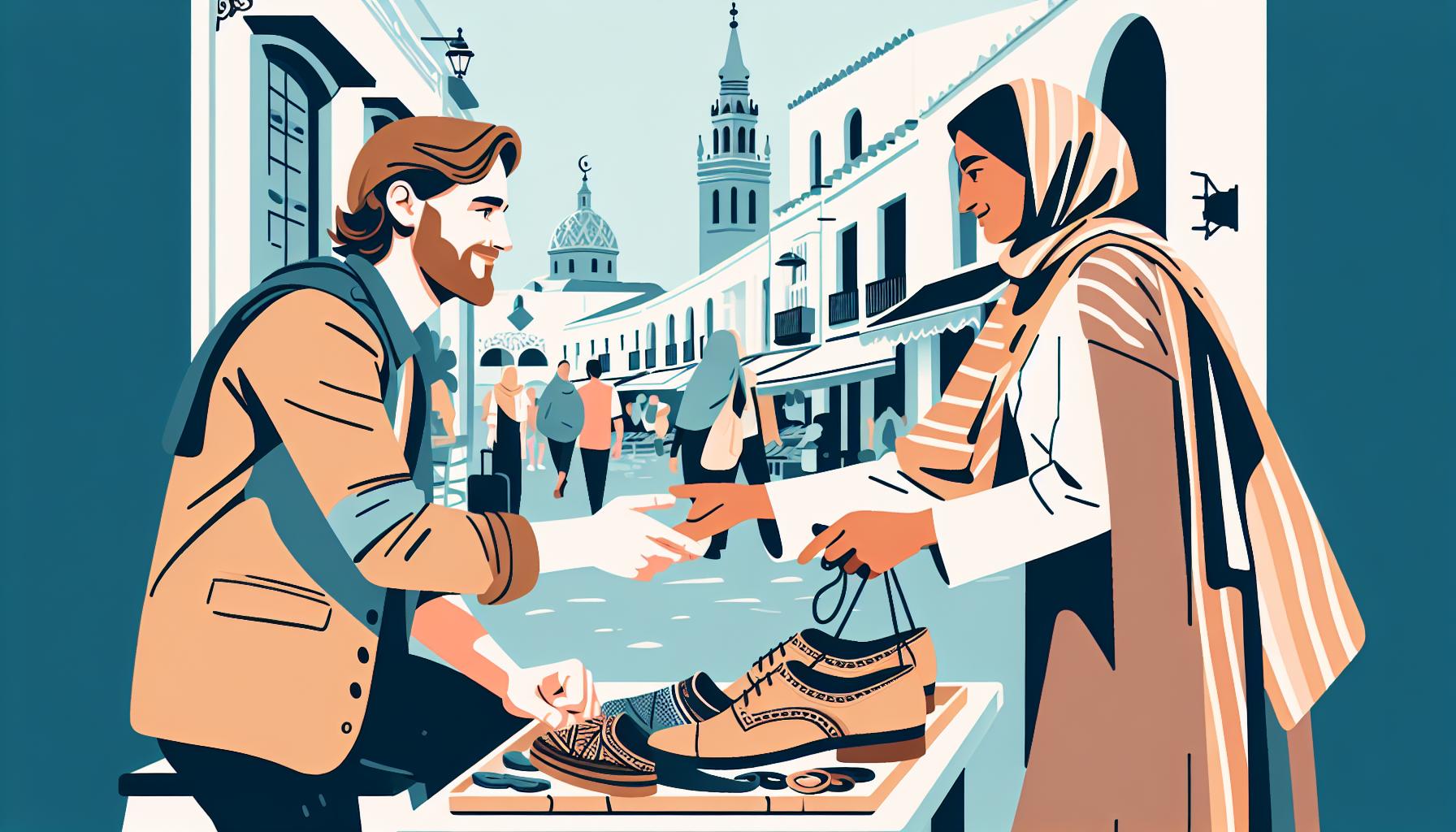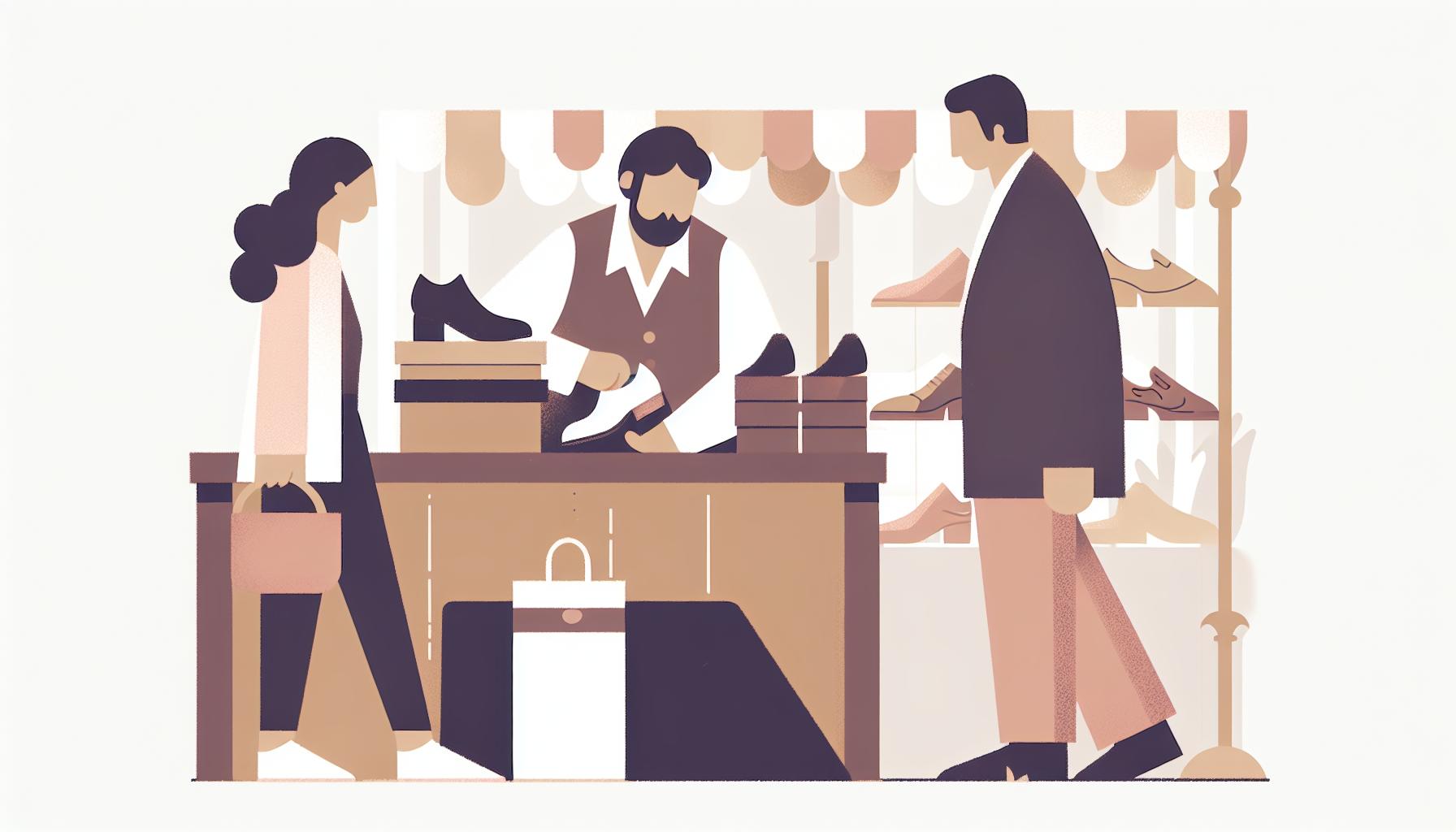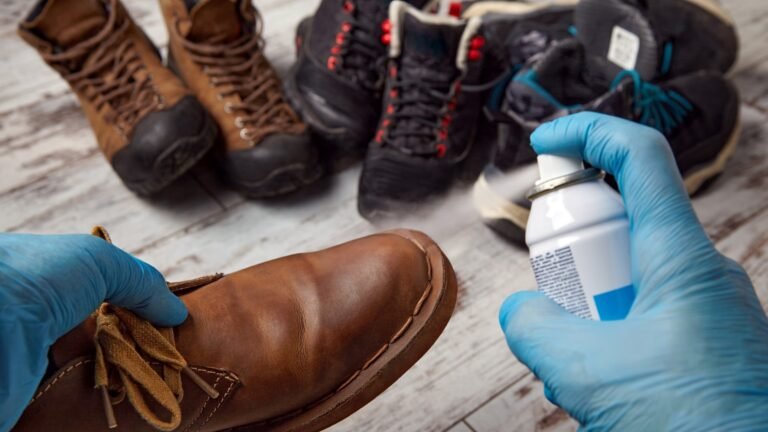Learn to Ask ‘How Much Are These Shoes, Sir?’ in Spanish for Better Shopping
Traveling to a Spanish-speaking country can be an exhilarating experience, but it also means brushing up on your language skills. I’ve found myself in many markets and shops, eyeing a pair of shoes and wondering how to ask for the price without fumbling my words. It’s a common scenario for many travelers, and I’m here to help you navigate it with ease.
Knowing how to ask “How much are these shoes, sir?” in Spanish is not just about getting the price; it’s about connecting with the shopkeeper and showing respect for their language and culture. It’s a simple phrase that can open up a world of interactions and maybe even snag you a discount if you play your cards right. Let’s dive into how you can master this useful phrase and make your shopping experience abroad as smooth as possible.
Key Takeaways
- To inquire about the price of an item, especially shoes, in Spanish-speaking countries, use the phrase “¿Cuánto cuestan estos zapatos, señor?”, translating to “How much are these shoes, sir?”. This not only helps in getting the price but also shows respect and politeness towards the shopkeeper.
- Understanding the local currency and having a basic knowledge of numbers in Spanish are essential for smoothly navigating shopping transactions and potentially negotiating prices.
- Making an effort to use basic Spanish phrases beyond pricing inquiries, such as greetings and expressions of thanks, can enrich the shopping experience, demonstrating respect for the culture and fostering better connections with locals.
- Practicing these phrases before your trip can enhance your confidence in speaking Spanish and improve your overall travel experience by opening doors to more authentic interactions and potentially better deals.
- Always communicate with respect and politeness, including using courteous phrases and acknowledging the vendor’s effort, which can lead to a more enjoyable and rewarding shopping experience.
How to Ask for the Price in Spanish

Navigating markets and shops in Spanish-speaking countries can be an enriching experience. It’s a chance to immerse myself in local culture and practice my language skills. The key phrase I’ve learned to master is asking for the price, which opens up a world of interaction and negotiation that’s both fun and useful.
The basic phrase for asking the price of an item in Spanish is “¿Cuánto cuesta?” This translates to “How much does it cost?” When pointing to a specific item, like a pair of shoes, I often say, “¿Cuánto cuestan estos zapatos, señor?” which means “How much are these shoes, sir?” This not only helps in getting the price but also shows respect and politeness towards the shopkeeper.
Here’s a quick guide to help you remember:
- Basic price inquiry: ¿Cuánto cuesta?
- Specific item inquiry: ¿Cuánto cuestan [item], [formal or informal address]?
Understanding the response is just as crucial. Prices in Spanish-speaking countries are often given in the local currency. Hence, it’s vital to be familiar with terms like “pesos,” “euros,” or whichever currency is in use. It’s also helpful to know numbers in Spanish to understand the prices given.
Practicing these phrases before my trip has always paid off. I’ve found that shopkeepers are more patient and willing to explain or recommend other items when they see I’m making an effort to speak their language. Plus, it’s a great way to test my Spanish skills in a real-world setting.
Remember, it’s not just about the transaction; it’s about the connection. Speaking another person’s language, even if it’s just the basics, can significantly enhance the shopping experience. It’s a sign of respect for their culture and an open door to more authentic interactions.
With these tips and phrases at my disposal, asking for prices in Spanish has become second nature. Whether I’m browsing a local market or a chic boutique, I feel confident in my ability to communicate, connect, and maybe even haggle a little.
Importance of Learning Basic Phrases

Embarking on my travels to Spanish-speaking countries, I’ve learned the immense value of mastering basic phrases. It’s not just about asking “¿Cuánto cuesta esto, señor?” (*How much are these shoes, sir?) but about opening doors to richer, more authentic experiences abroad. I’ve found that locals appreciate the effort, even if it’s just a few words or sentences.
Here’s why learning these phrases is crucial:
- Cultural Respect: Showing that you’ve taken the time to learn parts of the local language demonstrates respect for the culture. It’s a sign that you’re not just another tourist but someone interested in understanding and appreciating the way of life there.
- Enhanced Connections: Being able to communicate, even at a basic level, allows for deeper interactions with people. It’s led to recommendations I wouldn’t have found in any guidebook and invitations to local events, offering a glimpse into the authentic daily life.
- Convenience and Independence: Knowing how to inquire about prices or directions empowers me to explore on my own terms. I can confidently navigate markets, transport systems, and restaurants without constantly relying on translation apps or English-speaking locals.
- Potential for Better Deals: Particularly in markets, speaking the language can lead to more favorable prices. Merchants often offer better deals to those who make the effort to speak their language, seeing it as a sign of respect and a willingness to engage in the local buying process.
Here are a few basic phrases that have transformed my shopping experiences:
- “¿Cuánto cuesta?” (How much does it cost?)
- “¿Tiene esto en otro color?” (Do you have this in another color?)
- “¿Puede hacerme un descuento?” (Can you give me a discount?)
Mastering these phrases hasn’t just made shopping easier; it’s enriched my entire travel experience. Each trip becomes less about sightseeing and more about immersing myself in a new culture, with every interaction adding a layer to my understanding and appreciation of the world.
Navigating Shopping Interactions in a Foreign Country

During my travels through various Spanish-speaking countries, I’ve found that engaging in shopping interactions requires more than just knowing how to ask for the price. It’s about creating a connection with the person on the other side of the counter. This connection often begins with a simple greeting. A cheerful “Buenos días” (Good morning) or “Buenas tardes” (Good afternoon) can set the stage for a positive interaction.
From there, diving straight into the heart of the matter with “¿Cuánto cuestan estos zapatos, señor?” (How much are these shoes, sir?) shows not only your interest in the item but also a respect for the language and culture. However, it’s crucial to remember that in many cultures, particularly in Spanish-speaking countries, haggling is part of the shopping experience. It’s not unusual for prices to be negotiable, especially in markets.
When aiming to negotiate, starting with phrases like “¿Es posible bajar el precio?” (Is it possible to lower the price?) can open up the floor to negotiations politely. In my experience, vendors appreciate the effort to speak their language and are often more willing to offer a discount or throw in an extra item as a gesture of goodwill.
Moreover, understanding and using numbers in Spanish is key. This not only helps in negotiating prices but also in ensuring you’re paying the right amount without confusion.
| Number | Spanish |
|---|---|
| 1 | Uno |
| 5 | Cinco |
| 10 | Diez |
Learning these basics and employing them during your shopping ventures abroad can significantly enhance your experience. Not only does it demonstrate a level of respect towards the culture, but it also empowers you to navigate transactions with confidence. Every interaction becomes a chance to practice the language, absorb the culture, and make each shopping experience uniquely rewarding. This approach has certainly transformed my shopping expeditions from mere transactions to memorable parts of my travel adventures.
Tips for Communicating Respectfully

When attempting to navigate shopping in Spanish-speaking countries, it’s vital to approach each interaction with a level of respect and politeness. I’ve discovered that being courteous not only opens doors but also creates a more enjoyable and authentic shopping experience. Here are some key tips I’ve learned about communicating respectfully.
First and foremost, always greet the shopkeeper or vendor. A simple “Buenos días” (Good morning) or “Buenas tardes” (Good afternoon) sets a friendly tone for the entire conversation. It’s a small gesture that goes a long way in showing respect for the person and their culture.
Next, use polite inquiries when asking about prices, such as “¿Cuánto cuesta este par de zapatos, por favor?” (How much are these shoes, please?). Including “por favor” (please) in your questions or requests is crucial. It reflects well on you as a buyer and can make the vendor more receptive.
Understanding and using the local currency terms can also enhance the respectfulness of the interaction. It shows that you’ve taken the time to familiarize yourself with the basics of their economic system. Whether it’s Mexican pesos or Colombian pesos, knowing the currency can make transactions smoother and more respectful.
Another important aspect is acknowledging the effort of the vendor. Complimenting the quality of the items or the variety of options available can build a positive rapport. Phrases like “Me gusta mucho esto” (I like this a lot) can make the interaction more personal and appreciative.
Lastly, expressing gratitude is pivotal. After any purchase or even if you decide not to buy anything, saying “Gracias” (Thank you) acknowledges the vendor’s time and assistance. This simple word can leave a lasting positive impression.
By following these tips, I’ve found that not only do my shopping experiences become more rewarding, but I also foster meaningful connections with the locals. It’s amazing how much warmth and openness can come from communicating with respect and politeness.
Mastering the Phrase

When venturing into a Spanish-speaking country, one of the most useful phrases I’ve found myself needing is, “How much are these shoes, sir?” This sentence, seemingly simple, packs a lot of cultural significance and is a key to unlocking a more pleasant shopping experience.
To say “How much are these shoes, sir?” in Spanish, you’ll say, “¿Cuánto cuestan estos zapatos, señor?” It’s crucial to get the pronunciation as close as possible, but even more important is the attitude and respect with which you ask. I’ve learned that making an effort to speak the local language, even if it’s just a phrase or two, can significantly enhance the interaction between you and the shopkeeper.
Here are the components of the phrase broken down for easier understanding:
- ¿Cuánto cuestan? – How much do they cost?
- estos zapatos – these shoes
- señor? – sir?
While shopping, I also make sure to use polite gestures, like a small nod or a smile, as they complement the verbal communication and reflect respect toward the vendor. It’s been my experience that vendors appreciate when you treat them with courtesy, and they are often more willing to offer you a better deal or assistance in finding what you’re looking for.
Another tip I’ve picked up is to always be prepared with a basic understanding of the local currency and conversion rates. This knowledge helps in quickly understanding if a price is fair and in negotiating if necessary. Remember, bargaining is common in many places, but it should always be done with respect and a smile.
It’s fascinating how mastering just a few phrases and understanding the cultural context in which they are used can dramatically improve one’s shopping experience. By asking the price in Spanish and showing respect to the person you’re speaking with, you’re not just buying something; you’re engaging in a small but significant cultural exchange that enriches your travel experience beyond measure.
Conclusion
Mastering key phrases like “How much are these shoes, sir?” in Spanish isn’t just about making purchases. It’s about connecting with local cultures and respecting the people you meet. My journey through Spanish-speaking countries taught me the value of clear communication, polite gestures, and understanding local customs. Remember, it’s not just what you say but how you say it that matters. With the right approach, every transaction can become a memorable part of your travel experience. So next time you’re eyeing a pair of shoes abroad, you’ll know exactly how to inquire about them, making your shopping experience seamless and enjoyable.
Frequently Asked Questions
What are key phrases to know when shopping in Spanish-speaking countries?
Learning phrases like “How much are these shoes, sir?” is crucial for shopping in Spanish-speaking countries. It helps in effective communication and enhances the overall shopping experience.
Why is pronunciation important in Spanish-speaking markets?
Proper pronunciation shows respect and effort in communication with shopkeepers, which can create a positive shopping environment and facilitate better interactions.
How do gestures impact communication in Spanish-speaking countries?
Gestures such as nods and smiles complement verbal communication, showing respect and friendliness towards vendors, which can enhance the shopping experience.
Why is it important to understand local currency and conversion rates?
Understanding local currency and conversion rates is vital for assessing fair prices and negotiating effectively, ensuring travelers make informed purchases.
How can travelers enrich their shopping experiences in Spanish-speaking countries?
By mastering key phrases, practicing respectful communication, understanding local currency, and using polite gestures, travelers can foster respect and meaningful connections with locals, enriching their shopping experiences.






